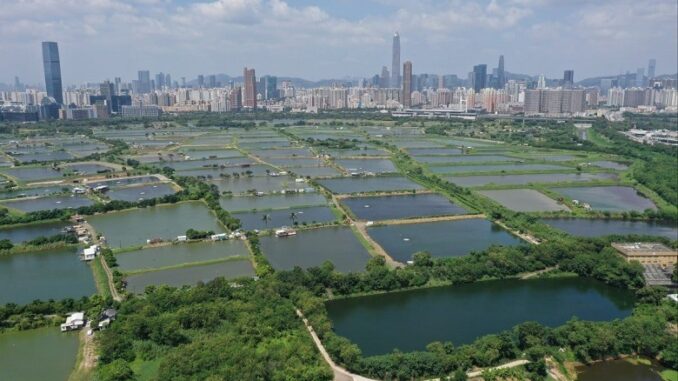
The Hong Kong special administrative region has considered a plan to build a proposed innovation and technology (I&T) hub, known as the San Tin Technopole in Yuen Longan, near the border with mainland China and Shenzen.
Hong Kong’s Environmental Protection Department has given approval to the environmental study into a plan to turn fish ponds in the northern New Territories into a tech hub. The approval is subject to a series of environmental conditions.
The Technopole will encompass more than 600 hectares of land in San Tin, with half of the site earmarked for developing the innovation and technology industry. The rest will be turned into a town centre including 54,000 flats, with the first residents expected to move there in 2031.
The Environmental Protection Department approval provides a solid foundation for the SAR government to proceed with the next stage of the town planning process and commence the project as scheduled.
The Environmental Protection department’s director, Samuel Chui, said the environmental impact assessment of the San Tin Technopole project “is scientific, professional and comprehensive. And it doesn’t underestimate the ecological value of the area being studied.”
The project will require the removal of about 1.7 hectares of woodland and the reclamation of 90 hectares of local fish ponds.
Hong Kong’s Civil Engineering and Development Department (CEDD) is responsible for implementing the specified ecological mitigation measures, including wildlife corridors and habitat creation in the area. The CEDD must submit detailed designs for the project and must refrain from filling in fish ponds in the area before creating a new one in a conservation park.
Chui said the CEDD is taking measures to protect Eurasian Otters, a species of conservation importance. The animals were recorded back in 2019, but were not found during a recent ecological survey. He said the department is adopting suggestions from green groups on building passages for the otters, as well as improving the design of buildings so birds will not crash into them.
Chui said the CEDD must also establish an environmental committee, with representatives from green groups and academics, as well as government agencies, which will aid the monitoring of, and approve proposals for, mitigation measures.
Sources:
- South China Morning Post, Apr 22, 2024. https://www.scmp.com/…/environmental-report-planned…
- RTHK, April 22, 2024. https://gbcode.rthk.hk/…/compo…/k2/1750021-20240422.html